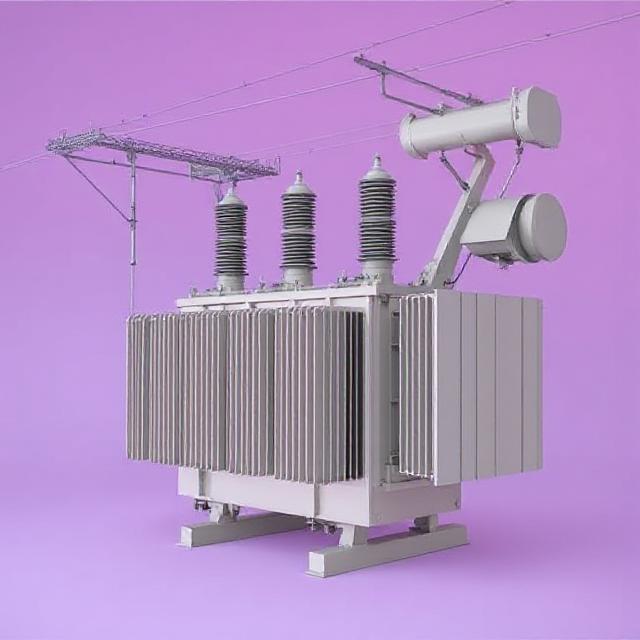Table of Contents
- Introduction
- What Is a Three-Phase Distribution Transformer?
- Core Functions of Three-Phase Distribution Transformers
- Voltage Regulation and Distribution
- Load Balancing
- Energy Efficiency
- Network Reliability
- Applications in Power Distribution
- Junengda Electrical: Leading the Way in Transformer Innovation
- Types of Transformers Offered by Junengda
- Benefits of Using Three-Phase Distribution Transformers
- Maintenance and Lifespan Considerations
- Summary Table
Introduction
In the rapidly evolving world of electrical infrastructure, three-phase distribution transformers play a critical role in managing and delivering power safely and efficiently. Whether powering cities, factories, or commercial zones, these transformers are indispensable to modern electrical grids.

This comprehensive guide explores the functions, benefits, and applications of three-phase distribution transformers, while also introducing Junengda Electrical, a top-tier manufacturer trusted by Fortune 500 companies for premium transformer solutions.
What Is a Three-Phase Distribution Transformer?
A three-phase distribution transformer is a type of electrical transformer that converts high-voltage electricity from the power grid into lower-voltage electricity suitable for use in homes, businesses, and industries.
Key characteristics include:
- Operates on three-phase power (three alternating currents offset by 120°)
- Efficient for large-scale electrical distribution
- Used in medium-voltage distribution networks (typically 2.4 kV to 35 kV)
These transformers are essential in bridging the gap between power generation and end-use, delivering electricity where and how it’s needed.
Core Functions of Three-Phase Distribution Transformers
1. Voltage Regulation and Distribution

One of the primary functions is to step down high transmission voltages (often above 11kV) to a usable level (400V or 230V), ensuring safety and compatibility with household and industrial devices.
Advantages of precise voltage regulation:
- Protects electrical equipment from overvoltage
- Reduces energy loss during transmission
- Ensures stable supply across the grid
2. Load Balancing

A three-phase system enables load balancing across all three phases, which helps in:
- Minimizing losses due to unbalanced loads
- Optimizing the performance of motors and machinery
- Improving overall power quality and stability
This is especially critical in industrial environments, where large machines demand stable and balanced power.
3. Energy Efficiency
Three-phase transformers are more energy-efficient than their single-phase counterparts, as they:
- Deliver power with less conductor material
- Minimize transmission losses
- Enable smaller, lighter motors with higher output
Lower operating costs and enhanced sustainability make them ideal for modern smart grids.
4. Network Reliability
Reliable operation is ensured through:
- Redundancy in the three-phase setup (if one phase fails, others can continue)
- Improved fault detection and isolation
- Stable operation under varying load conditions
This ensures continuous and uninterrupted power supply, even under partial load failures.
Applications in Power Distribution
Three-phase distribution transformers are widely used in:
- Urban and Rural Grids: Distributing power to residential and commercial buildings
- Industrial Facilities: Running three-phase motors and heavy machinery
- Renewable Energy Systems: Integrating solar and wind power into the grid
- Construction Sites: Temporary power supplies for heavy equipment
They are the workhorses of electricity distribution, efficiently supporting diverse infrastructure demands.
Junengda Electrical: Leading the Way in Transformer Innovation

Junengda Electrical is a high-tech enterprise that integrates R&D, manufacturing, sales, and after-sales service of high-performance power transformers.
Key highlights:
- Designated supplier to several Fortune 500 companies
- Equipped with advanced production facilities and senior engineering teams
- Focused on delivering custom electrical solutions based on client needs
With its customer-centric strategic approach, Junengda ensures that each transformer meets the most rigorous global standards in efficiency, durability, and safety.
Types of Transformers Offered by Junengda
Junengda Electrical’s diverse product range supports a wide array of applications:
- Distribution transformers
- Pole Monuted Transformer
- Pad Mounted Transformer
- Oil-immersed Transformer
- Compact Substation
- Dry-type Transformer
- Power Transformer
Their products are engineered to deliver optimum performance, energy efficiency, and long service life.
Benefits of Using Three-Phase Distribution Transformers
Why industries and utilities prefer three-phase transformers:
- Lower Energy Loss: Minimizes I²R and core losses during power transfer
- High Load Capacity: Better suited for industrial and commercial use
- Cost-Effective Wiring: Requires less copper/aluminum than single-phase systems
- Better Performance: Stable voltage and continuous operation
- Versatility: Adaptable to various voltages and configurations
These advantages are essential for building modern, reliable, and sustainable electrical infrastructures.
Maintenance and Lifespan Considerations
Three-phase distribution transformers are engineered for longevity, but proper care is key:
- Routine Inspections: Check insulation, connections, and oil levels (if oil-immersed)
- Load Monitoring: Avoid overloading to prevent thermal stress
- Cooling System Checks: Ensure fans and radiators are functioning properly
- Periodic Testing: Electrical tests like winding resistance and insulation resistance
Expected lifespan: With regular maintenance, most three-phase transformers can last 25 to 35 years.
Summary Table
| Aspect | Details |
|---|---|
| Main Function | Steps down high voltage for safe distribution of electricity |
| Key Features | Voltage regulation, load balancing, energy efficiency, reliability |
| Common Applications | Urban and rural grids, industry, renewable energy, construction |
| Leading Manufacturer | Junengda Electrical – Fortune 500 supplier, advanced R&D and production |
| Types Available | Distribution, Pole Mounted, Pad Mounted, Oil-immersed, Dry-type, Compact Substations, Power Transformers |
| Maintenance Tips | Regular checks, avoid overloading, monitor oil levels and temperature |
| Average Lifespan | 25–35 years with proper maintenance |
